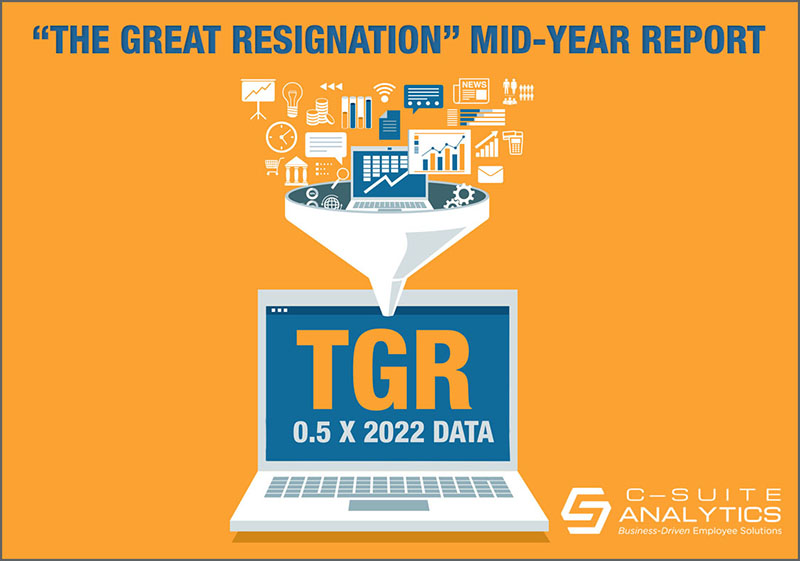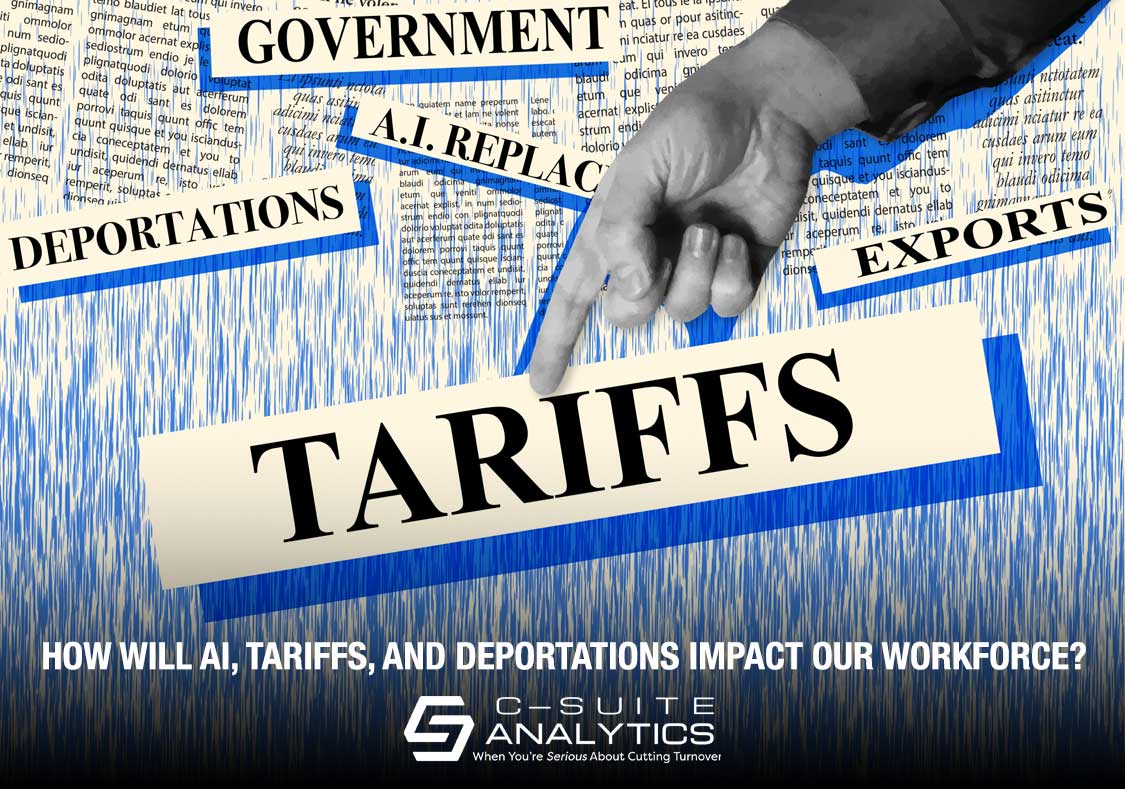AI, deportations, tariffs, and birthrate declines are reshaping America's workforce—blue- and white-collar alike. From baby boomer exits to AI disruptions, breaking down the workforce challenges no leader can afford to ignore.
“The Great Resignation” Mid-Year Report

“The Great Resignation” Media Reports
One cannot “Target Turnover” without tracking results of “The Great Resignation”, TGR for short. Here’s a mid-2022 data update starting with what the soothsayers told us way back in 2021, beginning with a quote from the Wall Street Journal:
- “Of 52 economists surveyed, 22 predicted that participation would never return to its pre-pandemic level.”
Then as reported by Time Magazine:
- “Economists predict that “The Great Resignation”, is only getting started, especially for Gen Z and millennial workers who are well positioned to find new ways to earn income.”
And this from the Burning Glass Economic Think Tank:
- “If immigration does not improve, I’m not sure how we get back to growth.”
The latter quote references one of two TGR contributors we’ve known about for decades: (1) The U.S. birthrate having declined for the past 70 years such that our economy would have stalled long ago if not for immigrants, and (2) young worker disloyalty as baby boomers stay with each employer an average of over 8 years while millennials and gen Z stay less than 3 years.
Then the pandemic piled on the clinching reasons for TGR, those being millions of U.S. workers retiring prematurely, millions of parents leaving the workforce when their children were forced home from school, followed by millions more who responded to COVID layoffs by starting their own businesses, and then of course over one million Americans who perished from the virus. That’s a lot of millions of U.S. workers who have abandoned traditional work.
“The Great Resignation” Key Economic Indicators
Let’s compare three key economic indicators for the period ending December 31st, 2021 to six months later ending in June of this year:
- What percentage of U.S. workers voluntarily quit their jobs? This is the essence of TGR in that it tells us how many workers are actually quitting relative to previous time periods. The answer is QUITS CONTINUE TO CLIMB UP. Year-end ’21 quits reached a then-all-time high of 32.9% of the U.S. workforce whereas end-of-June annualized was 34.2%.
- What percentage of U.S. workers were unemployed, measuring those workers who are actively seeking work but cannot find it? End-year 2021 3.9%, mid-year 2021 DOWN to 3.6%.
- And what is the total number of open jobs, the ones employers are trying to fill but cannot fill? Year-end 2021 an historic 11.5 million, mid-year 2022 DOWN to 10.7%.
“The Great Resignation” Data Deep Dive
Let’s take a deeper dive into these numbers, especially in light of the current media onslaught of recession talk which typically causes employers to hold on filling open jobs while at the same time driving unemployed workers to push harder for a paycheck. Let’s harken back, too, to those who have chosen to leave corporate work to permanently stay home with kids or start their own businesses…and then toss in those who prematurely retired, too. Might recession predictions be scaring these millions into full-time or part-time new gigs?
The short answers to our mid-year trends are even more workers are quitting and fewer workers are seeking jobs, the opposite of any previous pre-recession trends. The one encouraging data chunk is that open jobs have decreased, indicating employers are finding more workers. In fact if we allow ourselves to peek one month further out to July’s data, private sector payrolls are now 629,000 positions above their pre-pandemic high in February 2020.
Yet there remains one shocking data point that perhaps best predicts the futures of both TGR and our total economy. The now-decreasing mid-year number of open jobs that sits at 10.7 million is a full 60% higher than the number of open jobs at the end of 2019…which is what economists refer to as “the last normal year” prior to the pandemic. Here’s one way to say precisely what this means:
More workers are quitting than ever while unemployment is at historic lows, all while the number of open jobs remains at historic highs. How can our economy continue to prosper?
“The Great Resignation” Solution Begins with “R”
I’ve quoted economists here previously who said that while the media reports inflation and supply chain as our greatest economic burdens, both are ultimately caused by too few workers, exacerbated by “The Great Resignation”. The analysis provided here today proves it.
I just read a quote from Harvard Business Review indicating 30% of new hires leave their jobs within 90 days…across all jobs. So what percent of new hires in manufacturing, healthcare, and call centers are leaving their jobs in their first 90 days since turnover in these industries is considered the most burdensome?
The one-word answer beginning with “R” to solving TGR and building our businesses to their fullest is not recruiting. It’s retention. We’ve chased our recruiting tails long enough.



